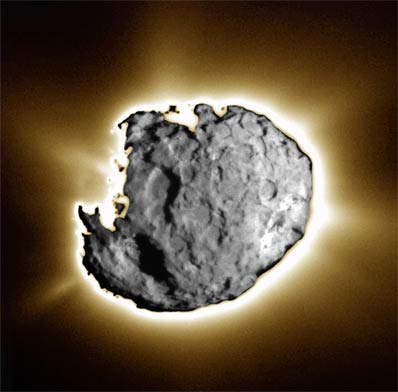Parts of comet Wild 2 formed close to the sun
 Washington, Jan 4: New analysis of the samples of the material picked up during NASA’s Stardust mission, have indicated that parts of the comet Wild 2 formed in an area close to the sun.
Washington, Jan 4: New analysis of the samples of the material picked up during NASA’s Stardust mission, have indicated that parts of the comet Wild 2 formed in an area close to the sun.
Stardust is an American interplanetary spacecraft, whose primary purpose was to investigate the makeup of the comet Wild 2 and its coma.
The Stardust spacecraft’s seven-year mission returned to earth in January 2006 with particles that are the same material that accreted along with ice to shape the comet about 4.57 billion years ago, when the sun and planets formed.
According to Lawrence Livermore National Laboratory, California, US, because the helium and neon isotope analysis suggests that some of the Stardust grains match a special type of carbonaceous material found in meterorites; hence both must have spent time in the same gas reservoir, which was close to the sun.
About 10 percent of the mass of Wild 2 is estimated to be from particles transported out from hot inner zones to the cold zone where the comet formed. Researchers conclude that this is how these grains with unusual isotope ratios go incorporated into a comet.
Earlier research showed that the comet formed in the Kuiper Belt, outside the orbit of Neptune, and only recently entered the inner regions of the solar system.
But during its lifetime, Wild 2 gathered material that formed much closer to the sun.
Even the new research shows that some of the particles in Stardust are consistent with the early solar nebula.
“The unusual isotope ratio of helium and neon demonstrate that materials in comet Wild 2 had been much closer to the young sun than previously expected,” said Bajt. (ANI)